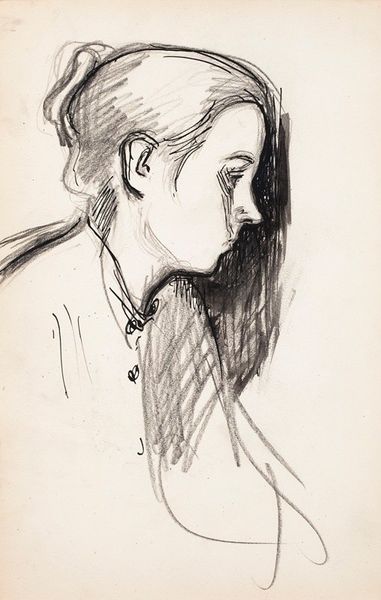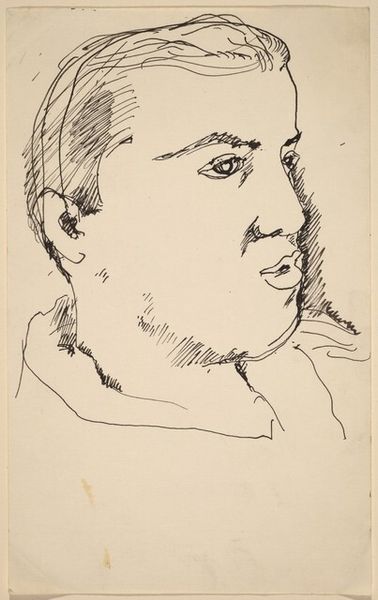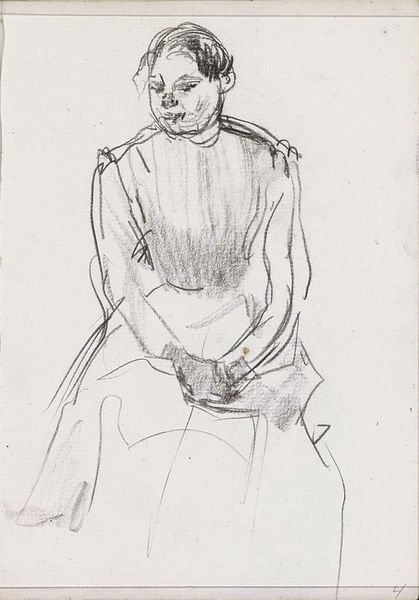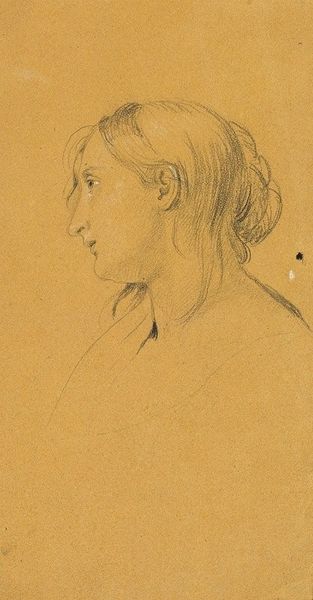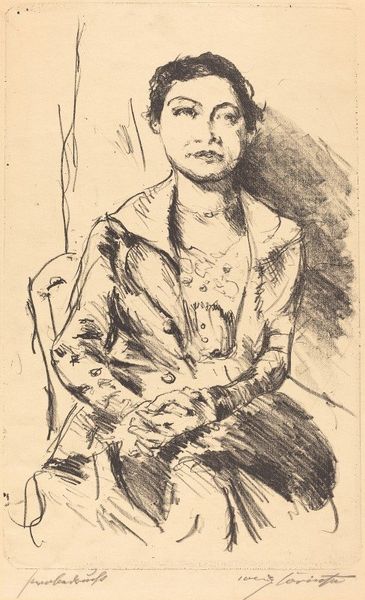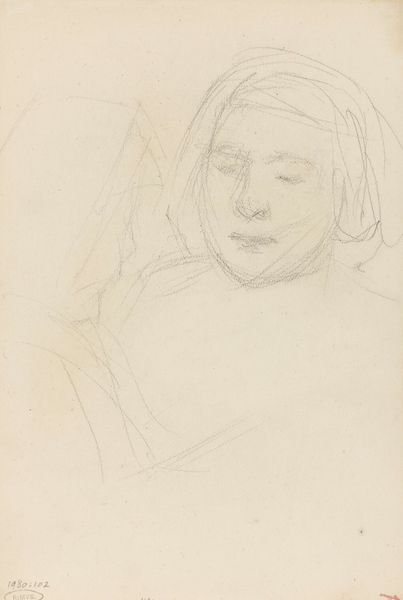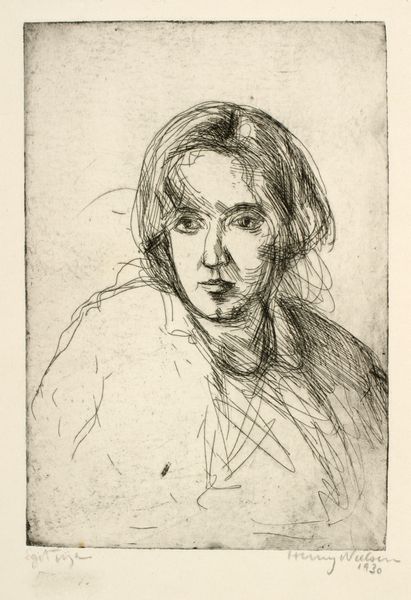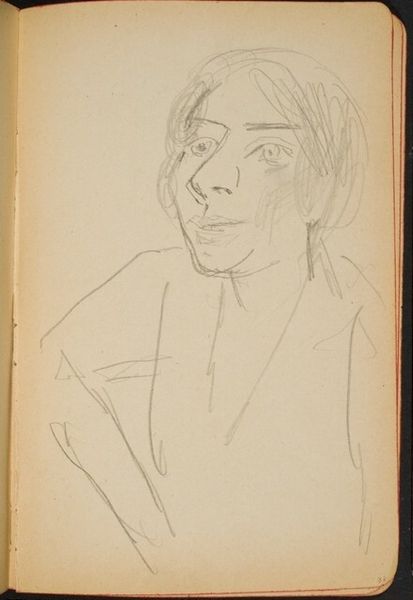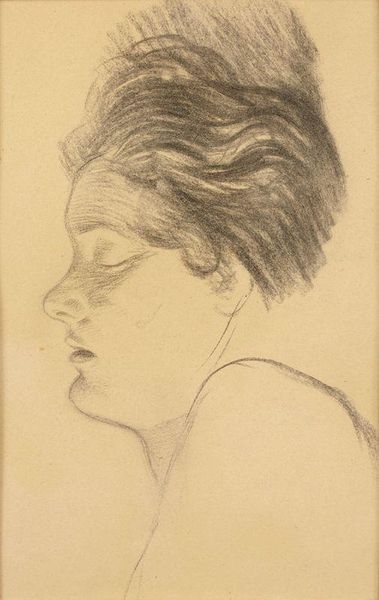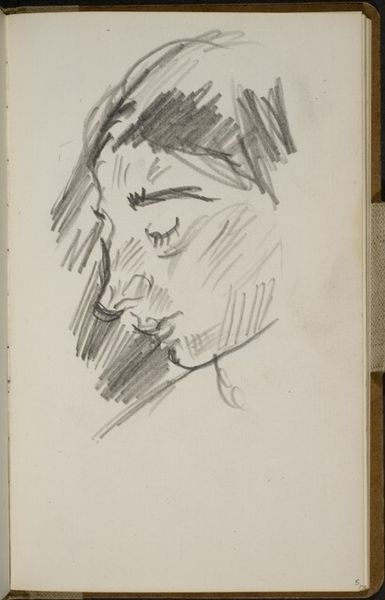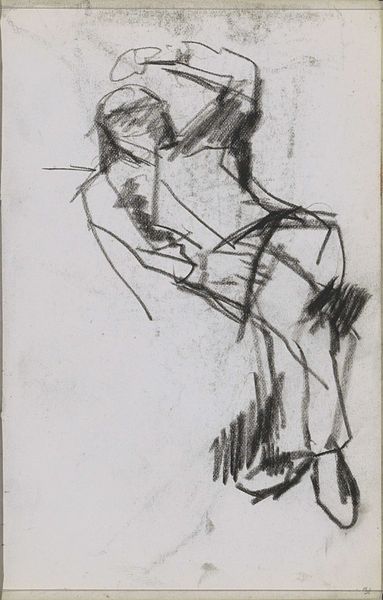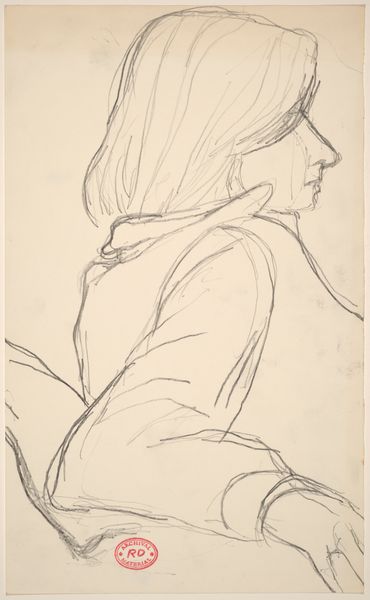
drawing, dry-media, pencil
#
portrait
#
drawing
#
dry-media
#
child
#
pencil
Dimensions: 13 x 6 cm
Copyright: Public domain
Curator: At first glance, this pencil drawing presents a soft, almost dreamy profile. Editor: Exactly! This is Alfred Dehodencq's "Presumed portrait of Edmond or Alfred, son of the artist, in profile," created around 1875. The historical context is significant. Consider Dehodencq’s position as an established artist capturing, ostensibly, his son during a period of evolving ideas about childhood and portraiture. Curator: The closed eyes definitely lend an air of intimacy, or perhaps even vulnerability. What power dynamics are at play when a father portrays his child with this seeming passivity? It encourages reflections on gender roles within 19th-century families. Editor: The art market was expanding, and domestic scenes, including portraits of children, became increasingly popular. These images weren't simply sentimental; they reinforced certain bourgeois values, ideals of domesticity and inheritance. The choice to render this possibly for an intimate audience as a preliminary drawing, versus for more public audiences as a painting raises a few issues around public persona versus familial. Curator: That makes me reconsider the medium, as you noted. The deliberate strokes of the pencil—almost hesitant, creating shadows—gives a feeling of immediacy, perhaps as though the artist quickly captured the child's likeness. But those dense strokes around the neckline suggest careful choices, deliberately obscurant to highlight the face, particularly those sweeping lashes. What’s your reading of this aesthetic choice? Editor: Pencil sketches such as these, offered art collectors insight into the artistic process and the “hand” of the artist, giving additional depth and richness to paintings completed around the same time. I tend to understand this artistic choice through these social dimensions. Curator: Thank you for reframing this intimate portrait in a more relevant perspective, reminding me that familial love is often entwined with market forces and public persona, just as much now as ever before. Editor: Yes, it underscores that images—especially portraits— are never simply reflections; they're constructions, built upon societal frameworks and personal biases. Hopefully visitors will have an opportunity to consider a fuller view when encountering such intimate portraiture.
Comments
No comments
Be the first to comment and join the conversation on the ultimate creative platform.
